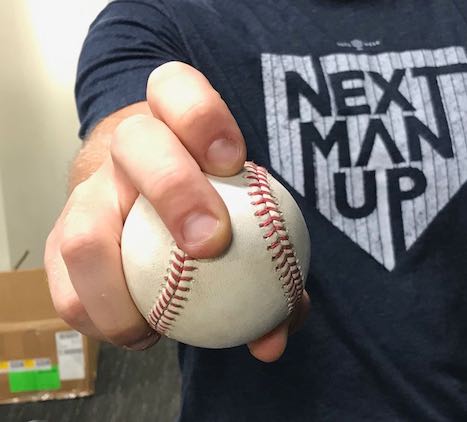Chance Adams, Domingo German, and Nick Pivetta on Developing Their Curveballs
Pitchers learn and develop different pitches, and they do so at varying stages of their lives. It might be a curveball in high school, a cutter in college, or a changeup in A-ball. Sometimes the addition or refinement is a natural progression — graduating from Pitching 101 to advanced course work — and often it’s a matter of necessity. In order to get hitters out as the quality of competition improves, a pitcher needs to optimize his repertoire.
In this installment of the series, we’ll hear from three pitchers — Chance Adams, Domingo German, and Nick Pivetta — on how they learned and developed their curveballs.
———
Chance Adams, New York Yankees
“When I was in college my pitching coach was Wes Johnson, who is now with the Twins. He taught me my curve. For awhile it was kind of slurve-slider, then it went to a curveball, and now it’s kind of slurvy again. But it’s interesting, because when I got [to Dallas Baptist University] it was, ‘OK, I throw it like this,’ and he was like, ‘Well, have you tried spiking it?’ My curve was moving, but it wasn’t sharp, and I was like, ‘No, not really.’ Spiking it was uncomfortable at first, but after I got used to it, it was pretty interesting. It started moving better.

“My pointer finger is off the seam, with just a little pressure on the ball. Wes said to try spiking it and see what feels good, so I worked on it with this much spike, that much spike. Even now, the spike kind of varies for me; I’ll move it back or forward for comfortability, but also movement-wise. Sometimes it’s sharper when it’s more spiked. It kind of depends on the day, and if I’m controlling it or not. Read the rest of this entry »
